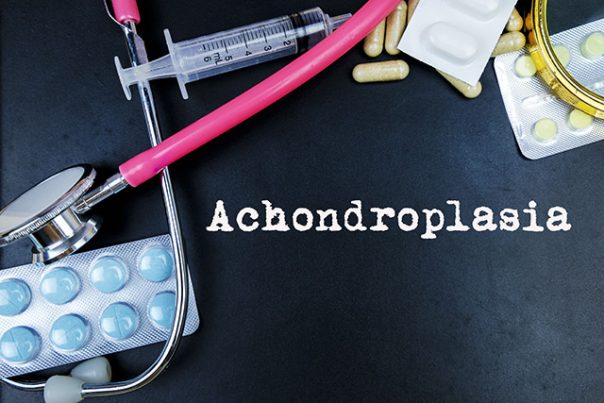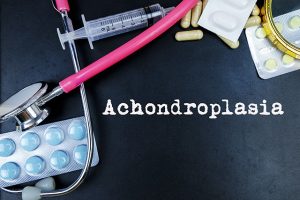
Achondroplasia — causes, side effects and treatments at NaturalPedia.com
Wednesday, December 20, 2017 by Zoey Sky
http://www.naturalpedia.com/achondroplasia-causes-side-effects-and-treatments-at-naturalpedia-com.html

Achondroplasia is the most common form of short-limb dwarfism in human beings. The disorder affects more than 250,000 people around the globe. More than 95 percent of patients have the same point mutation in the gene for fibroblast growth factor receptor 3 (FGFR3), and more than 80 percent of these are new mutations.
The mutation, which causes the gain of FGFR3 function, affects many tissues. Achondroplasia targets the cartilaginous growth plate in the growing skeleton, which causes different manifestations and complications. The biology of FGFR3 and the molecular and cellular consequences of the achondroplasia mutation are still being explained in detail to provide a more complete understanding of the disorder.
The natural history of the condition, which has been well documented in childhood and adolescence, is being defined more fully in adults with achondroplasia. Most of the serious complications can be modified favorably or prevented by anticipation and early treatment. Possible future treatments for achondroplasia include chemical inhibition of receptor signaling, antibody blockade of receptor activation, and alteration of pathways that modulate the downstream propagation of FGFR3 signals.

Known side effects of achondroplasia
People with achondroplasia generally have normal intelligence levels and their symptoms are often physical, not mental.
At birth, a child with this condition will have the following symptoms:
- A short stature significantly below average for age and sex.
- Short arms and legs, especially the upper arms and thighs, in comparison to body height.
- Short fingers (the ring and middle fingers may also point away from each other).
- A disproportionately large head compared to the body.
- An abnormally large, prominent forehead.
- An underdeveloped area of the face between the forehead and upper jaw.
Body systems harmed by achondroplasia
In over 80 percent of cases, achondroplasia isn’t inherited. These cases are caused by spontaneous mutations in the FGFR3 gene. Almost 20 percent of cases are inherited, and the mutation follows an autosomal dominant inheritance pattern, or only one parent needs to pass down a defective FGFR3 gene for a child to have achondroplasia.
If one parent has the condition, the child has a 50 percent chance of getting achondroplasia. Infants born with homozygous achondroplasia are usually stillborn, meaning they die within a few months of being born.
Food items or nutrients that may prevent achondroplasia
Consider consuming more of these foods or nutrients to prevent achondroplasia:
- Willowbark — Willowbark that contains salicin can be used to treat many different kinds of pain.
- Borage seed oil — Borage, or Borago officinalis, is an herb native to Syria. Borage flowers and leaves are edible, and borage seeds are often pressed to produce oil that is very high in gamma-linolenic acid (GLA). GLA has known anti-inflammatory effects that may make it beneficial in treating arthritis.
- Omega-3 fatty acids — The regular intake of fish oil supplements for up to three months can help relieve morning stiffness and joint tenderness.
Treatments, management plans for achondroplasia
The following treatments and management plans can help prevent achondroplasia:
- The foramen magnum, or the large opening under the skull, may require surgical enlargement in case of the severe narrowing (stenosis) and compression of the spinal cord. If this opening is too narrow, the blood vessels and nerves are compressed, which can cause central apnea or the loss of breathing control. Central apnea causes sudden death in infants (SIDS) with achondroplasia.
- Orthopedic procedures can be done to lengthen the limb bones and correct bowed legs, usually after full growth.
- Surgery, or lumbar laminectomy, can address when spinal stenosis (narrowing) that causes symptoms evident in young adults.
Where to learn more
Summary
Achondroplasia is the most common form of short-limb dwarfism in human beings.
At birth, a child with this condition will have a short stature significantly below average for age and sex and short arms and legs, especially the upper arms and thighs, in comparison to body height, among other symptoms.
Consider consuming more of these foods or nutrients to prevent achondroplasia: Willowbark, borage seed oil, and omega-3 fatty acids.
Sources include
Tagged Under: Tags: achondroplasia





